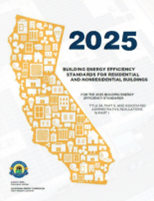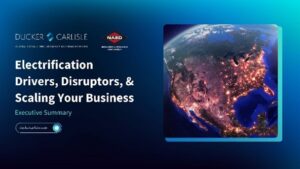Webinar: AI and Ecommerce: The Future for Electrical Distributors
Discover how AI is transforming electrical distribution—from customer insights to ecommerce efficiency—in this exclusive webinar with industry leaders from DDS and ECI.
October 22, 2025 @ 11:00am ET, Duration: 1 hour.
In this webinar, Matt Christensen, President & Co-founder of DDS, and Chris Fisher, VP of Global Ecommerce at ECI, will share how both organizations are introducing new AI-powered solutions designed to help distributors:
- Gain actionable insights into customer behavior and buying patterns.
- Improve and optimize the product content that fuels online sales.
- Streamline ecommerce management to free up valuable resources.
- Strengthen digital marketing, SEO, and customer engagement.
REGISTER @ AI and Ecommerce: The Future for Electrical Distributors | Electrical Wholesaling



 The whitepaper reveals how organizations can transform their software development practices to meet today’s demanding business requirements while ensuring security and quality. Key findings include:
The whitepaper reveals how organizations can transform their software development practices to meet today’s demanding business requirements while ensuring security and quality. Key findings include: In keeping with its alliance with NEMA and the NEMA Academy, the Lighting Controls Association is now the Lighting Controls Academy, a NEMA coalition. The LCA remains the leader in lighting controls education. Under the “Learn” tab, you can click the “Video Courses” button for a roster of free video courses that will be dramatically expanded over the next year. Under the “NEMA Academy” tab, you can access our Education Express courses that are registered for education credit. The new platform includes an enhanced website, comprehensive learning experience, and access to a broad and growing curriculum covering lighting controls in addition to other topics and categories such as lighting.
In keeping with its alliance with NEMA and the NEMA Academy, the Lighting Controls Association is now the Lighting Controls Academy, a NEMA coalition. The LCA remains the leader in lighting controls education. Under the “Learn” tab, you can click the “Video Courses” button for a roster of free video courses that will be dramatically expanded over the next year. Under the “NEMA Academy” tab, you can access our Education Express courses that are registered for education credit. The new platform includes an enhanced website, comprehensive learning experience, and access to a broad and growing curriculum covering lighting controls in addition to other topics and categories such as lighting.  Commercial building energy codes regulate the design of nonresidential buildings to minimize energy consumption. While the majority of U.S. states adopt model codes and standards, the State of California developed its own code: Title 24, Part 6 of the state’s Building Standards Code. The latest version was released in 2025 and will take effect January 1, 2026. Title 24, Part 6 covers residential, nonresidential, high-rise residential, and hotel/motel buildings. Title 24, Part 6 contains robust, detailed lighting and control requirements. It requires a broad range of controls to ensure general lighting is turned Off or reduced when not needed. . For lighting, a number of changes have been made, mostly adjustments and clarifications.
Commercial building energy codes regulate the design of nonresidential buildings to minimize energy consumption. While the majority of U.S. states adopt model codes and standards, the State of California developed its own code: Title 24, Part 6 of the state’s Building Standards Code. The latest version was released in 2025 and will take effect January 1, 2026. Title 24, Part 6 covers residential, nonresidential, high-rise residential, and hotel/motel buildings. Title 24, Part 6 contains robust, detailed lighting and control requirements. It requires a broad range of controls to ensure general lighting is turned Off or reduced when not needed. . For lighting, a number of changes have been made, mostly adjustments and clarifications.  As electricity demand continues to grow, the electrical distribution industry is uniquely positioned to help lead the transformation of the energy landscape with the services, materials, and solutions needed to support its customers and drive progress. To help members navigate this shift, NAED’s Education & Research Foundation, in partnership with Ducker Carlisle, presents the research study: Electrification Drivers, Disruptors, and Scaling Your Business. This study delivers valuable insight into:
As electricity demand continues to grow, the electrical distribution industry is uniquely positioned to help lead the transformation of the energy landscape with the services, materials, and solutions needed to support its customers and drive progress. To help members navigate this shift, NAED’s Education & Research Foundation, in partnership with Ducker Carlisle, presents the research study: Electrification Drivers, Disruptors, and Scaling Your Business. This study delivers valuable insight into: